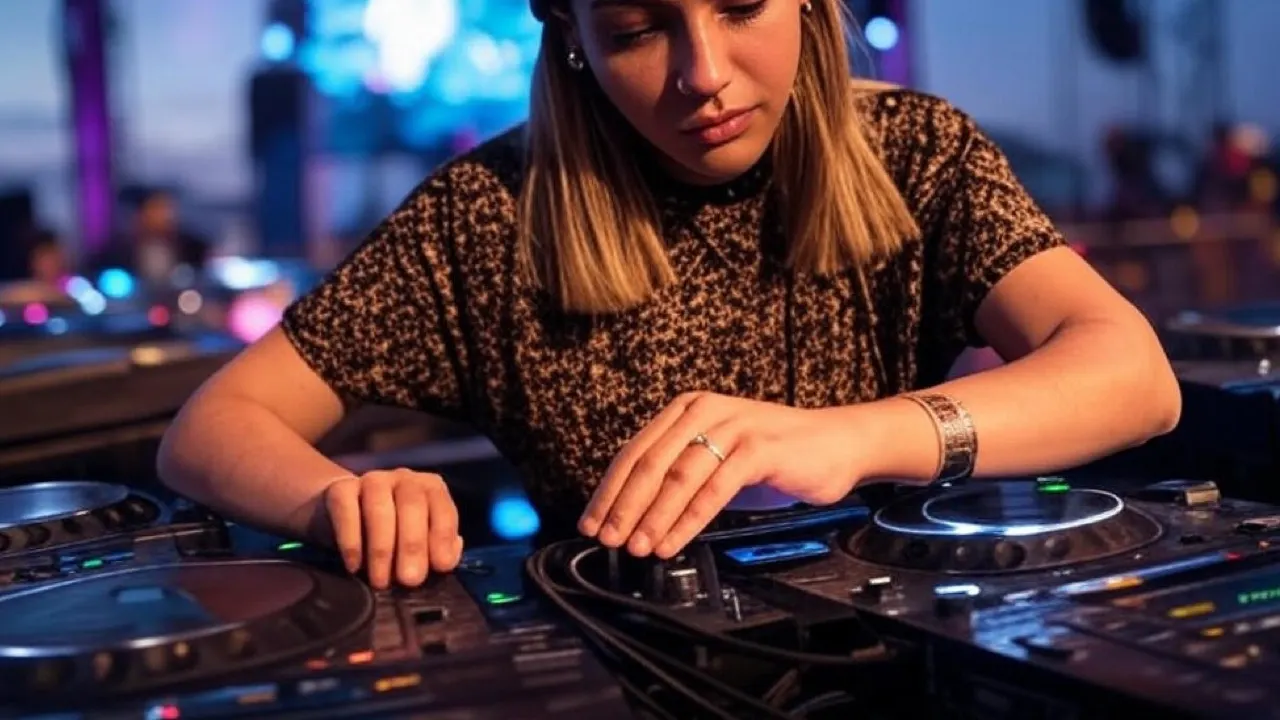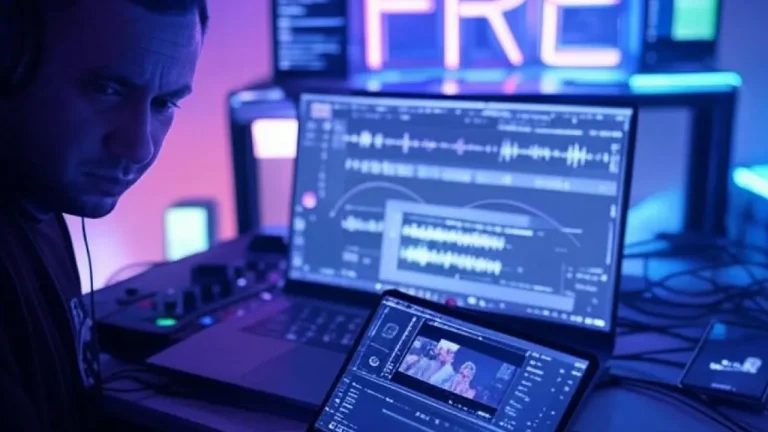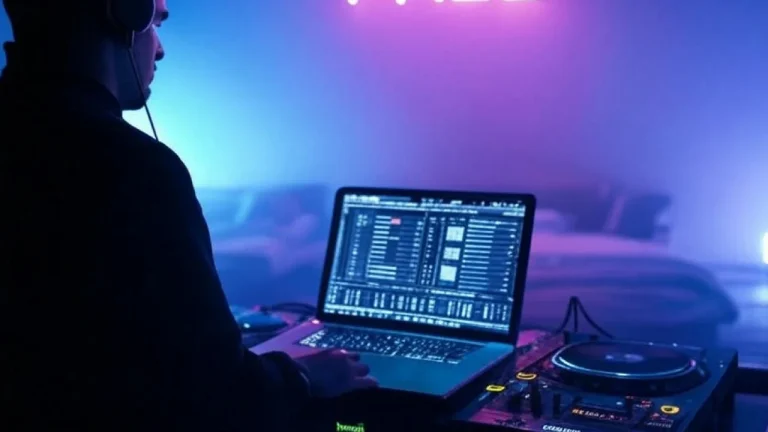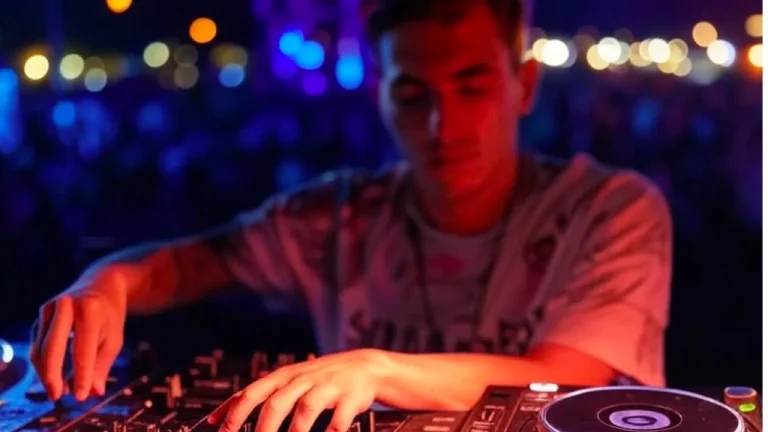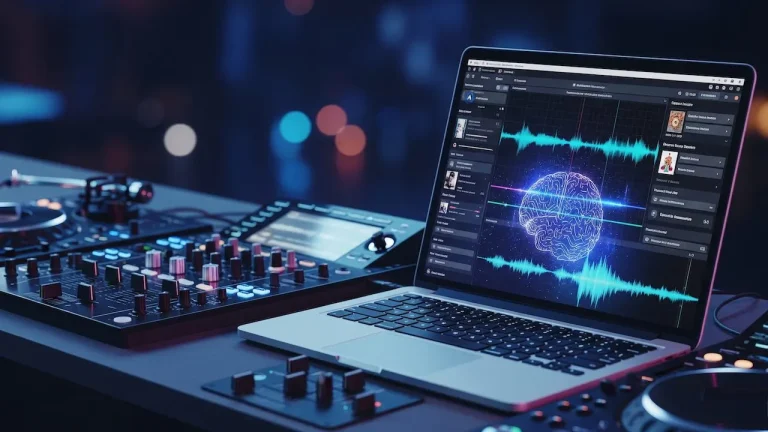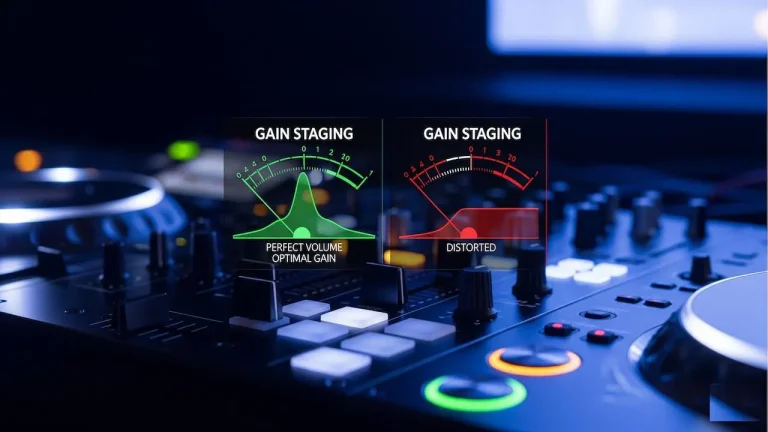DJs who master crowd interaction skills create electric atmospheres that keep dance floors packed all night. Crowd reading is the ability to gauge the mood, energy, and preferences of your audience in real time, while effective interaction transforms passive listeners into active participants who feel connected to your performance.
Successful crowd engagement combines reading body language, strategic microphone use, and adaptive track selection. These skills separate amateur DJs from professionals who command rooms and build loyal followings. Master these techniques to elevate your performances from good to unforgettable.
Reading Your Crowd: The Foundation of Engagement
Observing body language and energy levels provides valuable insights into what type of music resonates with your audience. Watch for heads nodding, feet tapping, and enthusiastic dancing to gauge crowd response.
Active crowd reading requires looking up from your equipment and making eye contact with dancers. Avoid looking down at the DJ equipment or at some screen and instead face the audience eye-to-eye. This direct connection helps you spot reactions instantly and adjust accordingly.
Key crowd reading indicators include:
- High energy signals: Raised hands, jumping, collective singing along
- Moderate engagement: Swaying, head bobbing, casual conversation
- Low energy warnings: Standing still, looking at phones, heading to bars
- Genre preferences: Different reactions to house versus hip-hop tracks
Begin your set with a mix of genres and tempos to gauge what resonates most with your audience. This approach shows your range while providing valuable feedback about crowd preferences.
Microphone Mastery: Your Direct Connection Tool
The best way to keep the crowd engaged as a DJ is by talking to them! Use the mic for simple shout-outs like “how we feeling?” to easily make the experience more personal and lively. However, timing and technique matter more than frequency.
Effective microphone techniques include:
- Strategic timing: Speak during natural song breaks or instrumental sections
- Clear delivery: Project your voice confidently without shouting
- Brief messages: Keep announcements under 10 seconds to maintain flow
- Personal touches: Acknowledging individuals or groups in the crowd with personalized shoutouts adds a personal touch and makes the audience feel valued
Make eye contact with the room, and use your body too. People use body language and eye contact subliminally to help them understand. Your physical presence amplifies your vocal connection with the crowd.
What to Say and When
Introduce simple, catchy phrases or instructions that are easy for the crowd to follow and respond to. Examples include “Put your hands up,” “Let me hear you scream,” or “Everybody jump.”
Avoid overusing the microphone or speaking during vocal sections of popular songs. Lower the volume when the song gets to a popular lyric, so that they can scream out the rest of the line. This technique creates participatory moments without interrupting the music flow.
Track Selection Strategy for Maximum Engagement
Mix popular hits with some unexpected tracks that showcase your unique taste as a DJ. Balancing your song selection builds a strong crowd connection by blending familiar tunes that everyone knows and loves.
Smart track selection involves:
- Familiar foundations: Play 70% recognizable tracks for sing-along moments
- Surprise elements: Add 30% unique selections to showcase your style
- Energy mapping: Build tension, release energy, and maintain flow by creating a sense of journey through gradual energy building
- Genre transitions: Smooth shifts between styles to test crowd preferences
Monitor dance floor response during each track change. If energy drops, have backup tracks ready to redirect the mood quickly.
| Crowd Energy Level | Track Selection Strategy | Interaction Approach |
|---|---|---|
| High Energy | Peak-time bangers, crowd favorites | Minimal talking, let music drive |
| Moderate Energy | Build-up tracks, familiar vocals | Encouraging shout-outs, hype calls |
| Low Energy | Crowd-pleasers, sing-along anthems | Direct engagement, request taking |
Physical Presence and Stage Performance
Your body language communicates as much as your music selection. Dance behind the decks to show genuine enjoyment and encourage crowd movement. DJs who join in on the dancing make their connection with crowds all too clear during their sets.
Performance techniques that boost engagement:
- Active movement: Sway, dance, and move rhythmically with your tracks
- Visual connection: Scan the entire room regularly, not just the front
- Hand gestures: Point to excited dancers or signal upcoming drops
- Facial expressions: Smile genuinely and show excitement for your music
Position yourself where the crowd can see you clearly. Your visible enthusiasm becomes contagious and elevates the room’s energy naturally.
Adapting to Different Venue Types
Club environments require different interaction approaches than wedding receptions or corporate events. Identifying the target audience and analyzing their demographics and musical tastes can provide valuable insights.
Venue-specific strategies include:
Nightclub Settings
- Focus on peak-time energy building
- Use bass drops and build-ups for crowd control
- Minimal talking during prime dancing hours
- Read the room for spontaneous genre shifts
Private Events
- Take specific requests when appropriate
- Acknowledge special occasions and guests
- Adjust volume for conversation-friendly periods
- Play broader music selection for diverse age groups
| Venue Type | Primary Goal | Interaction Style | Music Approach |
|---|---|---|---|
| Nightclub | Maximum dance floor energy | Hype-focused, minimal talking | Peak-time electronic, current hits |
| Wedding Reception | Inclusive celebration atmosphere | Warm, personal announcements | Multi-generational crowd-pleasers |
| Corporate Event | Professional yet engaging mood | Polished, appropriate commentary | Safe, recognizable background music |
Technology Tools for Enhanced Interaction
Modern DJ software includes features specifically designed for crowd engagement. Mixing music for a room is a dialogue, and tools help you go beyond track choice to interact with the crowd on another level.
Useful technology includes:
- Request apps: Allow crowd submissions without interrupting your flow
- Social media integration: Display live hashtags or Instagram feeds
- Lighting synchronization: Coordinate visual effects with musical peaks
- Live streaming tools: Engage online audiences simultaneously
For streaming events, use icebreakers to make the crowd feel more comfortable. Prepare funny questions beforehand to ask them before the party. Online engagement requires more active communication since visual cues are limited.
Building Long-Term Crowd Relationships
Gathering feedback can be achieved by getting on the stage and learning from your crowd. Surveys, social media comments, and ratings provide valuable insights into the audience’s experience.
Relationship-building strategies:
- Regular venue presence: Become familiar with recurring customers
- Social media engagement: Respond to comments and share crowd photos
- Music discovery sharing: Post track IDs for songs people request
- Event promotion: Announce upcoming gigs to build following
Remember names of regular attendees and acknowledge them during sets. This personal recognition creates loyal fans who become your unofficial promoters.
Common Crowd Interaction Mistakes to Avoid
Even experienced DJs can make engagement errors that kill the mood. Avoid these common mistakes:
- Over-talking: Speaking too frequently disrupts musical flow
- Poor timing: Interrupting vocal sections or emotional moments
- Generic responses: Using the same phrases repeatedly sounds robotic
- Ignoring crowd feedback: Playing personal favorites despite poor response
- Volume battles: Competing with conversation instead of reading the room
When mistakes happen, acknowledge them briefly and move forward. Learn specific techniques for handling live performance errors to maintain crowd confidence.
People Also Ask
Talk to crowds strategically, not frequently. Use microphone interactions 3-5 times per hour during natural song breaks. Quality beats quantity when building crowd connection.
Engaged crowds show raised hands, synchronized dancing, singing along, and forward movement toward the DJ booth. Disengaged audiences stand still, check phones, or move toward exits.
Quickly switch to proven crowd-pleasers when energy drops. Have backup tracks ready in different genres and energy levels. Acknowledge the room’s vibe change with appropriate music selection.
Take requests selectively based on venue type and set flow. Accept requests that match your current energy level and musical direction. Politely decline requests that would disrupt your planned journey.
Advanced Crowd Psychology Techniques
Understanding crowd psychology helps predict and influence group behavior. Large groups often follow social proof, meaning when one person starts dancing enthusiastically, others join in.
Psychology-based techniques include:
- Social proof activation: Target confident dancers first to influence others
- Anticipation building: Use musical tension to create collective excitement
- Group identity reinforcement: Reference shared experiences or local connections
- Emotional state management: Guide crowds through different energy phases
Watch for social leaders in your crowd and cater to their preferences early. Their enthusiasm often spreads to nearby groups, creating organic energy multiplication.
Measuring Your Crowd Interaction Success
Track your improvement through specific metrics and feedback channels. Analyzing performance data, such as track popularity and audience retention, can help continuously improve audience interaction.
Success indicators include:
- Dance floor density: Percentage of venue capacity actively dancing
- Crowd retention: How long people stay during your set
- Social media mentions: Tags, stories, and positive comments
- Repeat bookings: Venues and promoters requesting return performances
- Request volume: Number of song requests received
Document successful interaction moments and songs that generated strong responses. Build a personal database of crowd-tested material for different venue types and demographics.
Frequently Asked Questions
Start with simple, universal phrases like “How’s everyone feeling tonight?” or “Let me see those hands up.” Practice timing these moments during instrumental breaks. Begin with basic mixing skills before adding complex crowd work.
Switch to universally popular tracks that typically generate response. Try different genres systematically to find what resonates. Sometimes unresponsive crowds need familiar songs to break the ice before accepting new material.
Adapt your interaction style to match venue atmosphere and crowd demographics. Corporate events need professional, subtle engagement while club environments support high-energy hype tactics. Learn specific crowd reading techniques for different settings.
Eye contact creates personal connection and helps you read individual reactions within the larger crowd. Scan the entire room regularly rather than focusing on one section. This inclusive approach makes everyone feel acknowledged.
Introverted DJs can excel at crowd interaction by focusing on music selection and strategic microphone use rather than constant talking. Develop your unique style that feels authentic rather than copying extroverted approaches.
Address technical problems quickly and transparently with brief crowd communication. Use backup systems and have emergency playlists ready. Master mistake recovery techniques to maintain crowd confidence during difficulties.
